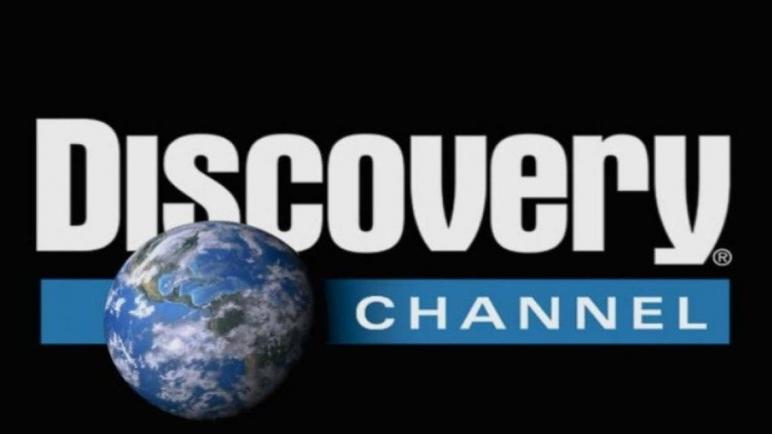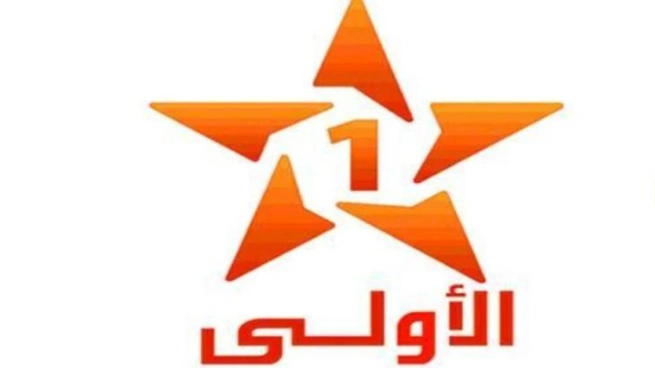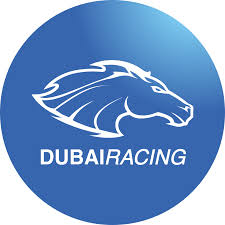Discovery Channel Frequencies Across Satellites 2025 📡🌍

Discovery Channel, owned by Warner Bros. Discovery, is a global leader in factual entertainment, captivating audiences with its diverse documentaries, reality shows, and science-based programming.
Since its launch in 1985, it has grown into a household name, offering iconic shows like MythBusters, Deadliest Catch, Shark Week, and Gold Rush.
As of July 2025, Discovery Channel’s regional feeds, including Discovery MENA, reach over 409 million households International, delivering High Definition and SD content across the MENA, Northern Africa, Europe, and beyond.
This article provides a comprehensive guide to the latest Discovery Channel frequencies across major satellites—Nilesat, Arabsat, Hot Bird, Thor, and Astra—along with expert tips for seamless Signal Signal Signal Signal Signal Signal Signal Signal Signal Signal Signal Signal Signal Signal Signal Signal Signal Signal Signal Signal Signal Signal Signal Signal Signal Signal Signal Signal Reception. 📺✨
Why Discovery Channel Captivates Audiences 🌟
-
Engaging Content 📽️: Covers science, technology, nature, history, and adventure with programs like How It’s Made, Planet Earth, and Expedition Unknown.
-
Global Accessibility 🌐: Broadcasts through regional feeds like Discovery MENA and Discovery Europe, available via satellite and streaming on Discovery+.
-
High-Quality Broadcasts 📺: Offers High Definition (1920×1080) and SD streams, with multilingual Captions and dubs for diverse audiences.
-
Massive Reach 📈: Third most distributed subscription channel in the U.S. (behind TBS and The Weather Channel), with 1.92 billion digital video starts in 2020.
-
Educational Entertainment 🧠: Combines learning with excitement, appealing to all ages through shows on wildlife, engineering, and true crime.
Discovery Channel Frequencies Across Major Satellites 📡
Discovery Channel operates multiple feeds (e.g., Discovery MENA, Discovery Europe, Discovery Science) through pay-Television providers like OSN and Sky, with some free-to-air options.
Below is a detailed frequency table for tuning into Discovery Channel as of July 2025, based on the latest available data. Most channels are encrypted, requiring subscriptions, but select feeds are free-to-air.
Frequency Table for Discovery Channel 2025 📊
|
Satellite |
Frequency |
Polarization |
Symbol Rate |
FEC |
Area |
Details |
|---|---|---|---|---|---|---|
|
Nilesat 201 (7°W) |
11727 MHz |
Horizontal (H) |
30000 kS/s |
2/3 |
MENA, Northern Africa |
DVB-S2, 8PSK, High Definition, encrypted (OSN package), Discovery MENA feed, includes Discovery Channel High Definition. 📺 |
|
Arabsat Badr-4 (26°E) |
10890 MHz |
Horizontal (H) |
27500 kS/s |
3/4 |
MENA, Gulf, Northern Africa |
DVB-S2, 8PSK, High Definition, encrypted (OSN package), Discovery MENA feed, includes Discovery Life High Definition. 🔒 |
|
Hot Bird 13B (13°E) |
12284 MHz |
Horizontal (H) |
27500 kS/s |
3/4 |
Europe, parts of MENA |
DVB-S2, 8PSK, High Definition, free-to-air, Discovery Europe, includes Discovery Channel High Definition. 📽️ |
|
Thor 7 (0.8°W) |
12149 MHz |
Vertical (V) |
30000 kS/s |
3/4 |
Nordics, Central/Eastern Europe |
DVB-S2, 8PSK, High Definition, encrypted (Focus Sat, Conax/Cryptoworks), Discovery Europe. 📡 |
|
Astra 1L (19.2°E) |
12207 MHz |
Vertical (V) |
29700 kS/s |
2/3 |
Europe |
DVB-S2, QPSK, High Definition, free-to-air, Discovery Science High Definition, includes select Discovery content. 📺 |
Key Information 🔍
-
Nilesat 201 (7° West): Discovery MENA on 11727 MHz, encrypted via OSN, delivers Discovery Channel High Definition and Investigation Discovery High Definition for MENA viewers (e.g., Egypt, UAE). Ideal for science and adventure enthusiasts.
-
Arabsat Badr-4 (26° East): Carries Discovery MENA on 10890 MHz, encrypted via OSN, featuring Discovery Life High Definition and DTX High Definition for Gulf and Northern African audiences (e.g., Qatar, Kuwait).
-
Hot Bird 13B (13° East): Offers Discovery Europe on 12284 MHz, free-to-air, delivering Discovery Channel High Definition and Discovery Science High Definition across Europe and parts of MENA. No subscription required.
-
Thor 7 (0.8° West): Broadcasts Discovery Europe on 12149 MHz, encrypted via Focus Sat, serving the Nordics and Central/Eastern Europe (e.g., Norway, Hungary). Requires Conax/Cryptoworks decryption.
-
Astra 1L (19.2° East): Provides Discovery Science High Definition on 12207 MHz, free-to-air, with select Discovery content for Europe, focusing on Germany and France.
-
Encryption Note 🔒: Discovery channels on Nilesat, Arabsat, and Thor are encrypted, requiring subscriptions through OSN or Focus Sat. Hot Bird and Astra offer free-to-air options for select feeds.
-
Alternative Access 🌐: For regions with limited satellite Area, stream Discovery Channel via Discovery+ ($4.99/month with ads, $8.99/month ad-free in the U.S.) at discoveryplus.com or through OSN Streaming in MENA. A 7-day free trial is available via platforms like Roku.
-
Thor Note ⚠️: Discovery availability on Thor may vary; verify with Focus Sat. Alternative channels like Animal Planet (11265 MHz, Horizontal, 25000 kS/s, FEC 3/4) are available on Thor 5.
Optimizing Signal Signal Signal Signal Signal Signal Signal Signal Signal Signal Signal Signal Signal Signal Signal Signal Signal Signal Signal Signal Signal Signal Signal Signal Signal Signal Signal Signal Reception: Expert Tips for Seamless Viewing 📺
To enjoy Discovery Channel’s engaging content with flawless quality, follow these expert tips tailored for Nilesat, Arabsat, Hot Bird, Thor, and Astra:
-
Satellite Satellite Satellite Satellite Satellite Satellite Satellite Satellite Satellite Satellite Satellite Satellite Satellite Satellite Satellite Satellite Satellite Satellite Satellite Satellite Satellite Satellite Satellite Satellite Satellite Satellite Satellite Satellite Dish Size Selection 📏: Use a 70-100 cm Satellite Satellite Satellite Satellite Satellite Satellite Satellite Satellite Satellite Satellite Satellite Satellite Satellite Satellite Satellite Satellite Satellite Satellite Satellite Satellite Satellite Satellite Satellite Satellite Satellite Satellite Satellite Satellite Dish for Nilesat, Arabsat, and Hot Bird in their primary Area areas (MENA, Europe). For Thor in the Nordics or Astra in Europe, a 60-80 cm Satellite Satellite Satellite Satellite Satellite Satellite Satellite Satellite Satellite Satellite Satellite Satellite Satellite Satellite Satellite Satellite Satellite Satellite Satellite Satellite Satellite Satellite Satellite Satellite Satellite Satellite Satellite Satellite Dish is sufficient. In fringe areas (e.g., southern Europe for Nilesat), opt for a 100-150 cm Satellite Satellite Satellite Satellite Satellite Satellite Satellite Satellite Satellite Satellite Satellite Satellite Satellite Satellite Satellite Satellite Satellite Satellite Satellite Satellite Satellite Satellite Satellite Satellite Satellite Satellite Satellite Satellite Dish for stronger signals.
-
Precise Satellite Satellite Satellite Satellite Satellite Satellite Satellite Satellite Satellite Satellite Satellite Satellite Satellite Satellite Satellite Satellite Satellite Satellite Satellite Satellite Satellite Satellite Satellite Satellite Satellite Satellite Satellite Satellite Dish Alignment 🧭: Align your Satellite Satellite Satellite Satellite Satellite Satellite Satellite Satellite Satellite Satellite Satellite Satellite Satellite Satellite Satellite Satellite Satellite Satellite Satellite Satellite Satellite Satellite Satellite Satellite Satellite Satellite Satellite Satellite Dish to the satellite’s orbital position (7°W for Nilesat, 26°E for Arabsat, 13°E for Hot Bird, 0.8°W for Thor, 19.2°E for Astra) using a satellite finder or apps like SatFinder. Ensure no obstructions (trees, buildings) block the line of sight.
-
Low-Noise Block Converter Compatibility 🔌: Install a Universal Ku-band Low-Noise Block Converter (9.75/10.6 GHz) for all listed satellites. Confirm your receiver supports DVB-S2 for High Definition broadcasts.
-
Signal Optimization 📶: Aim for 70-98% signal strength on your receiver’s meter to avoid pixelation. Adjust Satellite Satellite Satellite Satellite Satellite Satellite Satellite Satellite Satellite Satellite Satellite Satellite Satellite Satellite Satellite Satellite Satellite Satellite Satellite Satellite Satellite Satellite Satellite Satellite Satellite Satellite Satellite Satellite Dish azimuth, elevation, and Low-Noise Block Converter skew for peak performance.
-
Weatherproofing ☔: Protect against signal loss in rain or snow by securing the Satellite Satellite Satellite Satellite Satellite Satellite Satellite Satellite Satellite Satellite Satellite Satellite Satellite Satellite Satellite Satellite Satellite Satellite Satellite Satellite Satellite Satellite Satellite Satellite Satellite Satellite Satellite Satellite Dish and using waterproof Low-Noise Block Converter caps. Avoid retuning during high-pressure weather.
-
Area Verification 🗺️: Confirm your location is within the satellite’s footprint (e.g., Nilesat for MENA, Hot Bird/Astra for Europe, Thor for Nordics) using official Area maps.
Tuning Discovery Channel on Your Receiver: A Step-by-Step Guide 📡
Add Discovery Channel to your satellite receiver (e.g., Strong, Humax, Starsat) with these straightforward steps:
-
Access the Menu ⚙️: Press “Menu” or “Settings” on your remote, then select “Installation,” “Channel Search,” or “Antenna Setup.”
-
Select Manual Scan 🔎: Choose “Manual Scan,” “Manual Installation,” or “Add Satellite Transmitter.”
-
Choose the Satellite 🛰️: Select Nilesat 201 (7°W), Arabsat Badr-4 (26°E), Hot Bird 13B (13°E), Thor 7 (0.8°W), or Astra 1L (19.2°E). If unavailable, manually enter the orbital position.
-
Input Satellite Transmitter Details 📋: Enter the frequency, polarization, symbol rate, and FEC from the table above (e.g., 11727 MHz, Horizontal, 30000 kS/s, 2/3 for Nilesat). Verify accuracy.
-
Run the Scan 🔄: Press “Scan,” “Search,” or “OK.” Select “FTA Only” for free-to-air channels (Hot Bird, Astra) or “All Channels” for encrypted options (Nilesat, Arabsat, Thor). The scan takes 1-3 minutes.
-
Save Channels 💾: Save the scanned channels (e.g., “Discovery Channel High Definition,” “Discovery Science High Definition”) to your channel list.
-
Fine-Tune Signal 🔧: If the signal is weak, adjust Satellite Satellite Satellite Satellite Satellite Satellite Satellite Satellite Satellite Satellite Satellite Satellite Satellite Satellite Satellite Satellite Satellite Satellite Satellite Satellite Satellite Satellite Satellite Satellite Satellite Satellite Satellite Satellite Dish alignment and Low-Noise Block Converter skew to achieve 70-98% signal strength. Recheck cables and connections.
-
Test Playback 📺: Select a Discovery channel to confirm clear playback. For encrypted channels, ensure an active subscription and compatible decryption module (e.g., Conax, Irdeto).
Receiver Tips 🔌:
-
Enable “Low-Noise Block Converter Power” on Strong receivers (e.g., SRT 4950) in the “Satellite Transmitter” menu.
-
For encrypted channels, confirm your receiver supports decryption modules and your subscription is active with providers like OSN or Focus Sat.
-
Default PINs (e.g., 0000, 1234) may be required; consult your receiver’s manual.
Discovery Channel’s Global Impact and Programming Highlights 🌟
Discovery Channel continues to inspire and educate:
-
Viewership Dominance 📈: Reaches 409 million households globally, with a strong digital presence via Discovery+ (launched in India at ₹300/year in 2020, supporting eight languages).
-
Iconic Shows 🎤: Features MythBusters, Deadliest Catch, Shark Week, Gold Rush, and How It’s Made, blending science, adventure, and reality Television.
-
Global Presence 🌐: Discovery MENA on Nilesat/Arabsat, Discovery Europe on Hot Bird/Thor/Astra, and partnerships with OSN and beIN ensure wide accessibility.
-
Digital Innovation 📱: Discovery+ offers streaming for $4.99/month (with ads) or $8.99/month (ad-free), with exclusive originals and live content in select regions.
-
Historical Milestone 🏛️: Launched in 1985, Discovery Channel pioneered factual entertainment, evolving from pure science to include reality Television by the 2010s.




